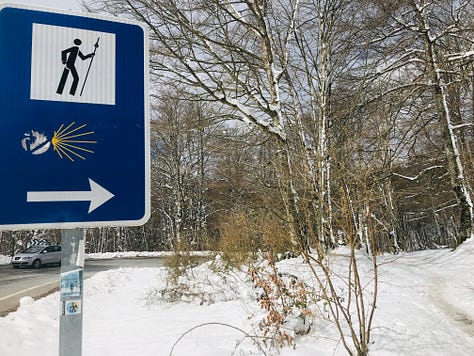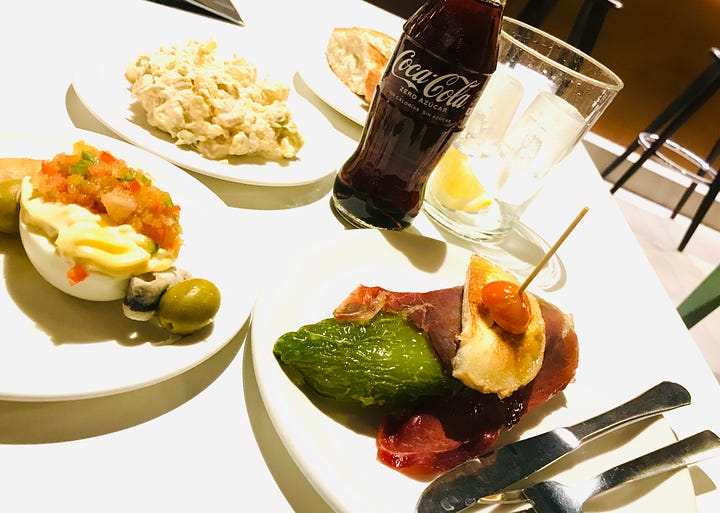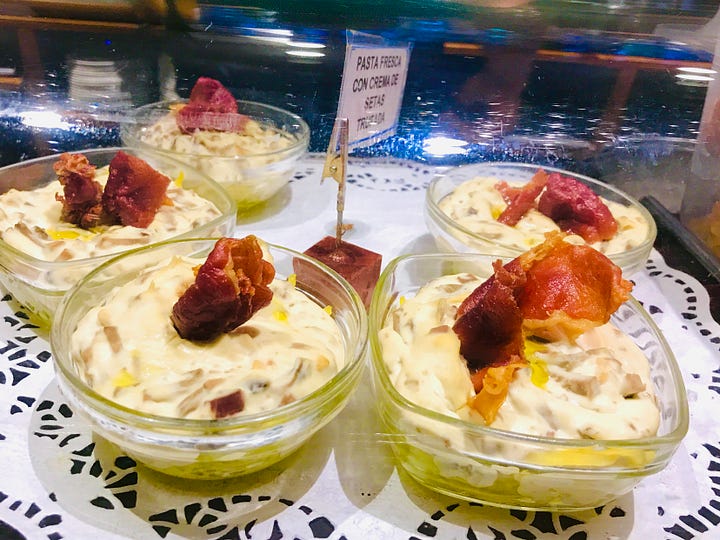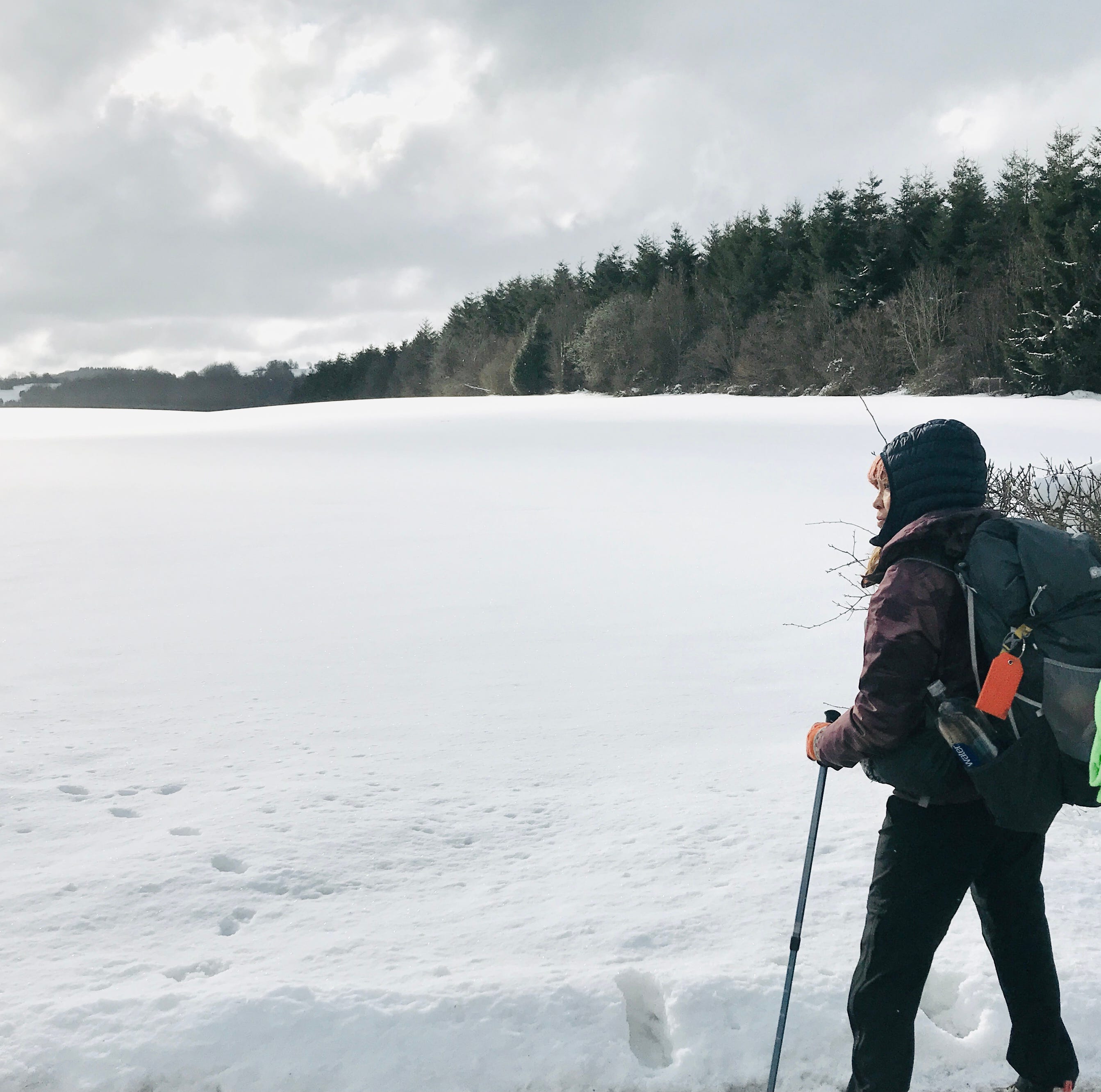Part 2: Burned out and Bummed Out in Spain: Camino de Santiago for Beginners
Part two of a four-part series. A five minute read.
Walking the Camino de Santiago, you’ll make friends, unless you make a very deliberate effort to never, ever speak with anyone. As a solo hiker, I was intent on just keeping to myself as much as possible. I didn’t want the pressure of keeping up with a group socially, or with their walking speed. (Tip: Don’t wear yourself out by trying to keep up with people who walk faster.)
Nonetheless, I ended up making friends without trying. My bunk mate at Roncesvalles and I decided to pair up heading towards our next stop, Zubiri, and ultimately, Pamplona, the first major city on the Camino. But Carolina didn’t want to take the snowy dirt trails and wanted to continue walking the freeway. So we said hasta luego, and alone I continued, looking for signs.



FLIRTING WITH ROOMMATES, RACING FOR BEDS
In Zubiri, I ended up sharing a small dormitory room. One of my roommates, Paco, was a tall, dark and handsome Spaniard from the coast who smelled like citrusy baby cologne. Paco, who was thoroughly entertained by my imitation of a Mexican accent versus a Spanish accent, asked if I wanted to walk together to Pamplona. He was leaving at 5 AM, he said. This was a hard no for me—I needed a very slow start and coffee and breakfast before I even think of hiking twelve miles. (Mistake: choosing food over people. Or, is this really a mistake?)
A good number of pilgrims start walking before sunrise. For some, this is about the bed race; that is, securing a bed in the public albergue at the next stop before they run out of space. Public albergue are very affordable lodging, often ten euro or less, but only for those with a pilgrim passport or credencial.
This passport can be obtained when you arrive at your starting point, usually from a church or a tourism office. As you go along, you get the passport stamped at the towns you visit. This passport will be crucial if you wish to obtain your compostela, a certificate of completion, when you arrive in Santiago.

Public albergue fill up fast. There are no reservations, only first-come, first-serve, thus, the early pilgrim starts. If you call ahead in the morning, they might save you a spot.
But if you’re not there by about two in the afternoon, that bed could be gone. And you, late-arriving pilgrim, will have to lug your backpack from albergue to albergue, or worse, walk to the next town looking for a bed, in some sad reenactment of the Christmas Eve story.
Or, you might decide to bite the bullet and get a much more expensive room in a private albergue or hotel in town, with prices ranging from about 25 to 80 euro.
OH HELLO, PAMPLONA!
I arrived in Pamplona, the first great Spanish city on the Camino, fabled for the running of the bulls, Ernest Hemingway and pintxos (appetizers). Who should I see at the gateway of Pamplona but handsome Paco. He invited me to stay at the same public albergue where he was, Albergue Jesus y Maria, a former church located right in the middle of town.


Once again, I ran into Paco in the co-ed bathroom. He invited me to dinner with other pilgrims. We had a fun evening trying out Pamplona’s famed pintxos, bite-sized creative masterpieces.
Paco again asked if I wanted to walk together to the next destination the next morning.
Alas, the stars just wouldn’t align. Once more, I picked creature comforts over a good-looking creature.
I was staying another day, and taking my first full day off in Pamplona. I booked my first private hotel room for about 90 euro. (Tip: Schedule some days off to recover from the rigors of daily walking and to treat yourself. I wish I had scheduled more days off).
LOAD MANAGEMENT, PILGRIM DISCOUNTS
Spending my day off in Pamplona was also strategic. Because Pamplona is the first town on the Camino with a major post office, this is where I once more lightened my backpack by shipping items that I wasn’t really using. I would later be reunited with these items, about a month later, at the Santiago post office. Shipping cost: about 35 euro. (Tip: Ship unneeded items that you can’t bear to leave behind.)
I also got my Spanish SIM card here, through Orange, for a very affordable 20- something euro for a month of service. Finally, I was fully online 24/7 and able to use navigational apps and make calls to albergue while walking. (Mistake: Waiting too long before getting a local SIM card. I should have done this when I arrived at Madrid.)
On my first day off, I splurged on really good food, museum tickets and the like. (Tip: Most museums offer pilgrim discounts, and will stamp your pilgrim passport.) I hung out with random groups of pilgrims, bonding over the aches, pains and the goal of getting to the next town, and ultimately Santiago. Maybe because I was a solo hiker, I had many pilgrims invite me to join them. (Tip: Other pilgrims are good sources of tips and tricks. Plus, you’ll end up with a really cool group of new friends. You’re never really alone on the Camino.)
Unfortunately, I never saw Paco again. (Mistake: Not exchanging contact info!)
Quick check in: The triumph of arriving in Pamplona was exhilarating. I wasn’t bummed out, or feeling burned out. Camino magic was working!
At the end of this series (see part 1 here), I’ll be sharing my best practices, an FAQ and my favorite gear.
Next week: Burnout comes back. Hiking while crying.
Plus: Worst nightmare happens— injured on trail!
I offer a free consultation for beginners to the Camino de Santiago (Camino Frances). Whether you’re still thinking of possibly walking your first Camino, or are already committed to doing it but need to know how to get started, e-mail me at contact@beginnersmind.life for your free consultation. Or maybe you want to find out how to be a solo female traveler? Send me your questions!






"choosing food over people" never!!
neither choosing people over food...
We really can have good food with good people!!!!